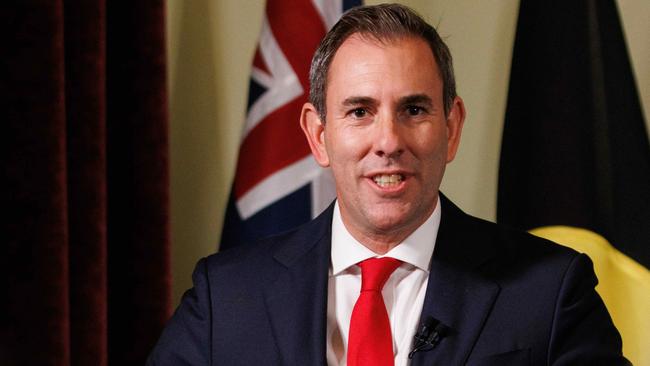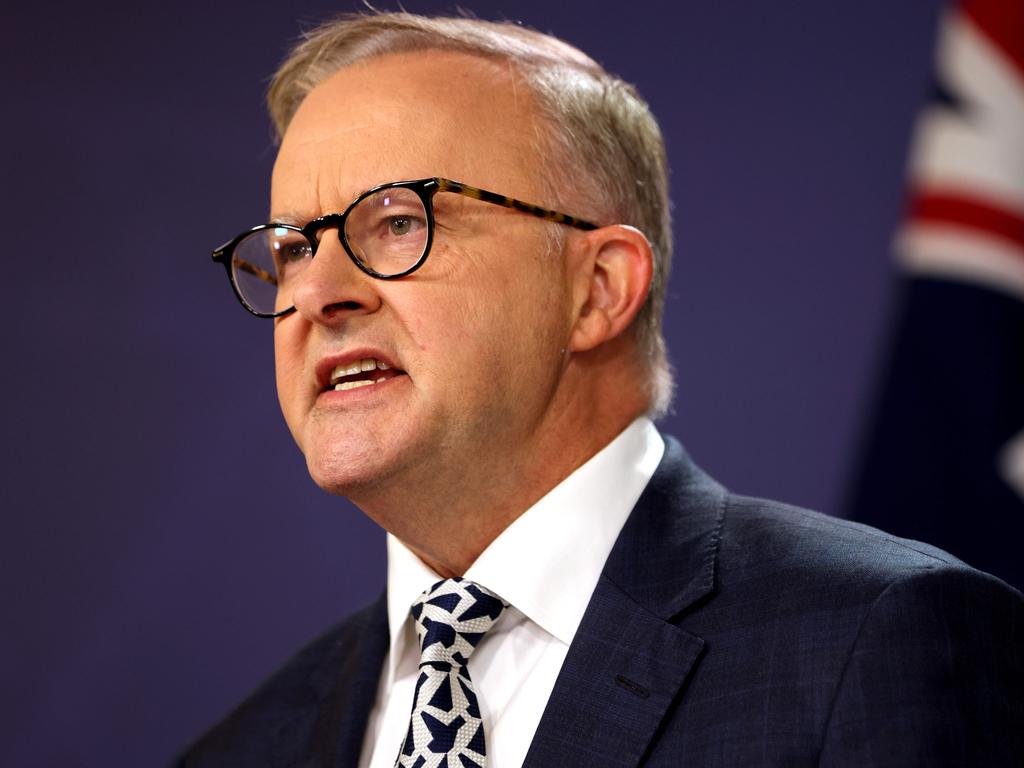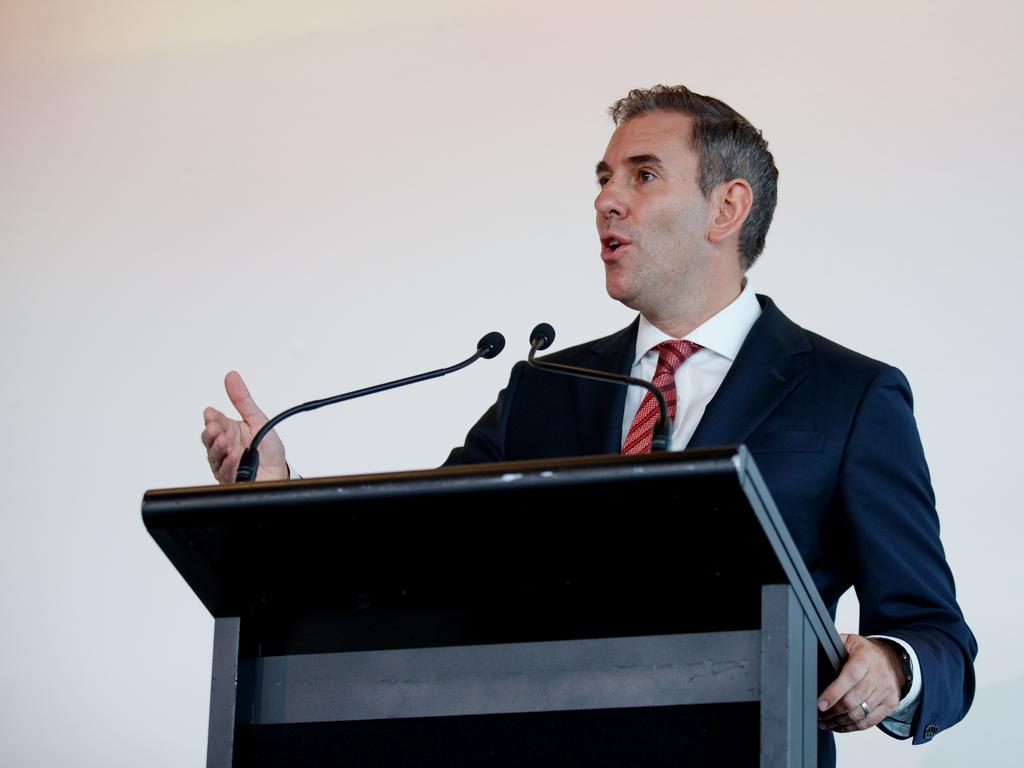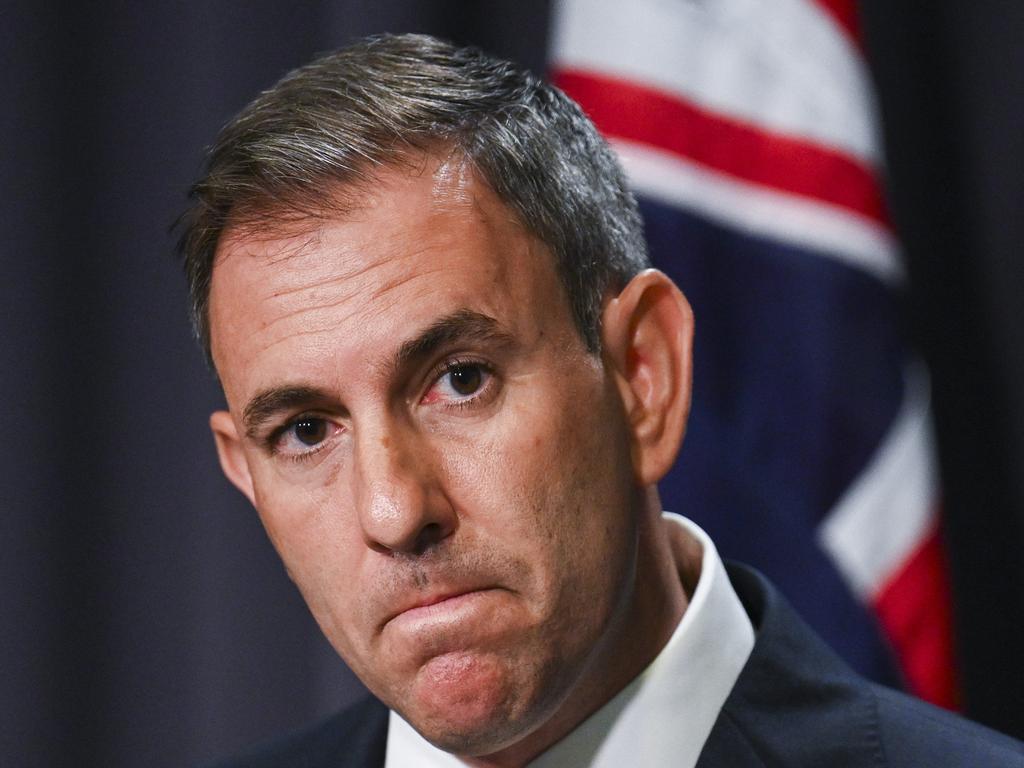Budget deficits to deepen over next four years amid Labor’s new growth agenda
Forecast deficits will deepen over the next four years as Jim Chalmers is forced to lift spending and funnel investment into new drivers of economic growth.

Forecast deficits will deepen over the next four years as Jim Chalmers is forced to lift spending and funnel investment into new drivers of economic growth under the government’s Future Made in Australia agenda, amid growing calls for the budget to avoid “poking the inflationary bear”.
The Australian understands the May 14 budget is likely to reveal a wafer-thin second surplus for 2023-24, but the Treasurer will refrain from claiming the target until the final budget outcome is delivered later in the year.
Any surplus will be accompanied by a deterioration in the budget position over the next four years when compared to the forecasts in December’s mid-year update, despite estimates the government is expected to rake in an extra $25bn in revenue over the forwards.
Labor downplays the extra $25bn as representing a massive drop-off in tax upgrades, arguing it is more than $100bn less than the $129bn average upgrade in the last three budgets. Dr Chalmers argues the drop-off is a key factor behind the weakening budget position.
But leading independent economist Chris Richardson suggested there was no need for the budget position to deteriorate, with his own forecasts pointing to an improvement in the bottom line of $28bn over four years and a $41bn revenue upgrade.
One week after Dr Chalmers said economists had “overreacted” to the March quarter’s hot inflation figures, Mr Richardson said the best way for the government to fight the cost-of-living crisis was “for it to help fight inflation”.
Mr Richardson warned that if the government tried to do too much, it risked falling for the “oldest mistake in the budget – making permanent promises off the back of temporary good news”.
“The budget needs to focus on avoiding poking the inflationary bear,” he said.
However, Dr Chalmers will end up banking about 95 per cent of the revenue upgrades for 2023-24, declaring that his “big focus in the near term remains easing inflation” while also helping to relieve cost of living.
Returning nearly all the extra revenue to the budget is part of a deliberate strategy to help navigate the inflation challenge in the near term while freeing up space for Dr Chalmers to loosen the purse strings in coming years as Labor pivots to its growth agenda.
Anthony Albanese’s flagship Future Made in Australia plan will be a central focus of the budget and a foundation stone for a second Labor term in office.
Dr Chalmers said Labor was “realistic about the challenges facing our economy and our budget – this includes not expecting the same sorts of massive revenue upgrades that we’ve seen in recent budget updates to continue”. “We’ve made substantial progress in getting the budget in better nick, having delivered the first surplus in 15 years with a second one in prospect, but we know that the pressures on the budget are intensifying, not easing,” he said.
The budget update comes ahead of Monday’s two-day meeting of the Reserve Bank board amid warnings from former governor Glenn Stevens the nation’s pathway to low inflation was “not yet” secure.
A surprise rate hike is not expected, but there are concerns the bank will sound the alarm on lingering price pressures in the economy in a move that would heap pressure on Dr Chalmers to rein in spending in his third budget. Economists are pushing back the likely date for the RBA’s first rate cut to next year. Some economists, including Judo Bank’s Warren Hogan, say the central bank could hike as soon as August. Mr Richardson said taming inflation should be the “everything of this budget” but warned it would “contain the opposite of what the IMF said would actually help – we’ll get a big tax cut and more spending”.
But Dr Chalmers said it was not just the quantity of spending that mattered. “It’s also the quality, timing, sequencing and shape of spending that makes a difference,” he said.
“We have carefully calibrated our commitments and put a premium on quality spending that helps to achieve other aims – like delivering responsible cost-of-living relief that directly reduces inflation or investing in workers and productivity to grow the economy in a low inflationary way.”
Dr Chalmers said it was “critical to also make room for urgent and unfunded priorities and invest in the future drivers of economic growth in the years ahead”.
“That’s why the May budget will be carefully calibrated to the economic circumstances, striking the right balance between getting inflation under control, easing cost of living pressures, supporting sustainable growth and building fiscal buffers in an uncertain global environment,” he said.
Labor argues the deterioration in the budget position over the forwards will be “slight” and that the outlook for the underlying cash balance will be greatly improved on the April 2022 pre-election economic and fiscal outlook. That document forecast a deficit of $56.5bn for 2023-24 and $47.1bn for 2024-25.
In his pre-budget analysis, Mr Richardson forecast a budget surplus of $13.3bn for 2023-24, an improvement of $14.4bn on December’s mid year update. While he acknowledged that spending was up, he also suggested the budget bottom line could be “$28bn better off over four years.” A deterioration in the budget position compared to the December forecasts would depend on two unknowns. “It comes down to two things,” Mr Richardson said. “The government can hide some money as they always do (through their commodity price assumptions). But the other is the spending.”
Mr Richardson was more optimistic in his forecasts for revenue upgrades, with the government arguing its $25bn figure for the next four years was much smaller than what many economists were predicting. He said that, although the revenue upgrades would be smaller than in previous years, it was “still big bucks”.
“I forecast $41bn more in revenues over the four years to 2026-27 than Treasury did in the last official forecast,” he said.
Mr Richardson’s pre-budget analysis also suggested the surplus was “peaking” given the budget faced major hits given the costs of the stage-three tax cuts from July coupled with rising Defence and NDIS spending.
Finance Minister Katy Gallagher told the ABC’s Insiders program that finding savings was harder and the government was encountering a lot of spending “that we’re having to do for terminating programs or legacy issues that haven’t been funded”.
She said this included “things like ICT rebuilds” and programs in health like “some cancer programs, public dental programs, those types of things”.
“You will see some savings. You’ll see some reprioritisation with existing expenditure. You’ll see all of that,” she said. “But you know, the pressure on the budget is real and intensifying.”








To join the conversation, please log in. Don't have an account? Register
Join the conversation, you are commenting as Logout